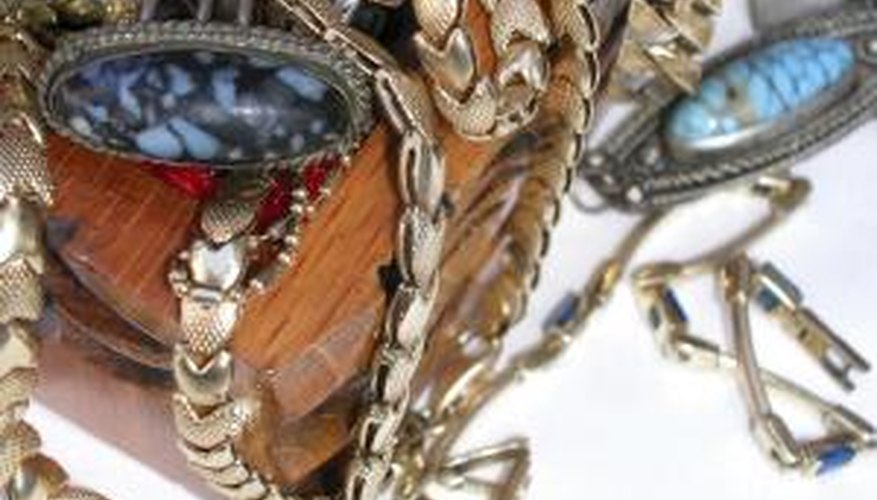Alpaca silver is a combination of metals formed to create a faux silver metal. This metal is also known as German silver or nickel silver and is made up of nickel, copper, tin and zinc. Due to the copper content (60%), the metal may develop a green tint, known as patina. Many times, if the Alpaca silver is used for jewellery, the manufacturer plates the piece in sterling silver, much like the process for gold electroplate. In time, the silver plating wears off.
- Alpaca silver is a combination of metals formed to create a faux silver metal.
- Many times, if the Alpaca silver is used for jewellery, the manufacturer plates the piece in sterling silver, much like the process for gold electroplate.
Polish your Alpaca silver with a metal polishing cloth to remove any tarnish build-up. Normal day-to-day wear keeps the metal from becoming dull, however, exposure to soaps and other cleansers may create a film on the surface.
Wash dirt and grime from the Alpaca silver using a mild detergent, such as a dish liquid, mixed with warm water. Use a soft cloth to wipe heavily soiled areas. Rinse the metal in warm water.
Use a soft toothbrush on jewellery pieces that contain gems or rhinestone settings. The bristles can also clean any crevices in intricate pieces of Alpaca jewellery. Always use water when cleaning with the toothbrush to avoid scratching the surface of the jewellery.
Use a solution of baking soda and water to form a paste. Apply the paste to the Alpaca silver and wipe it off with a soft cloth. Continue buffing out the metal with a clean cloth until the shine returns.
- Wash dirt and grime from the Alpaca silver using a mild detergent, such as a dish liquid, mixed with warm water.
- Apply the paste to the Alpaca silver and wipe it off with a soft cloth.
Dry the Alpaca silver thoroughly before storing the metal. Although the Alpaca silver will not rust, the water can cause the metal to become dingy.
